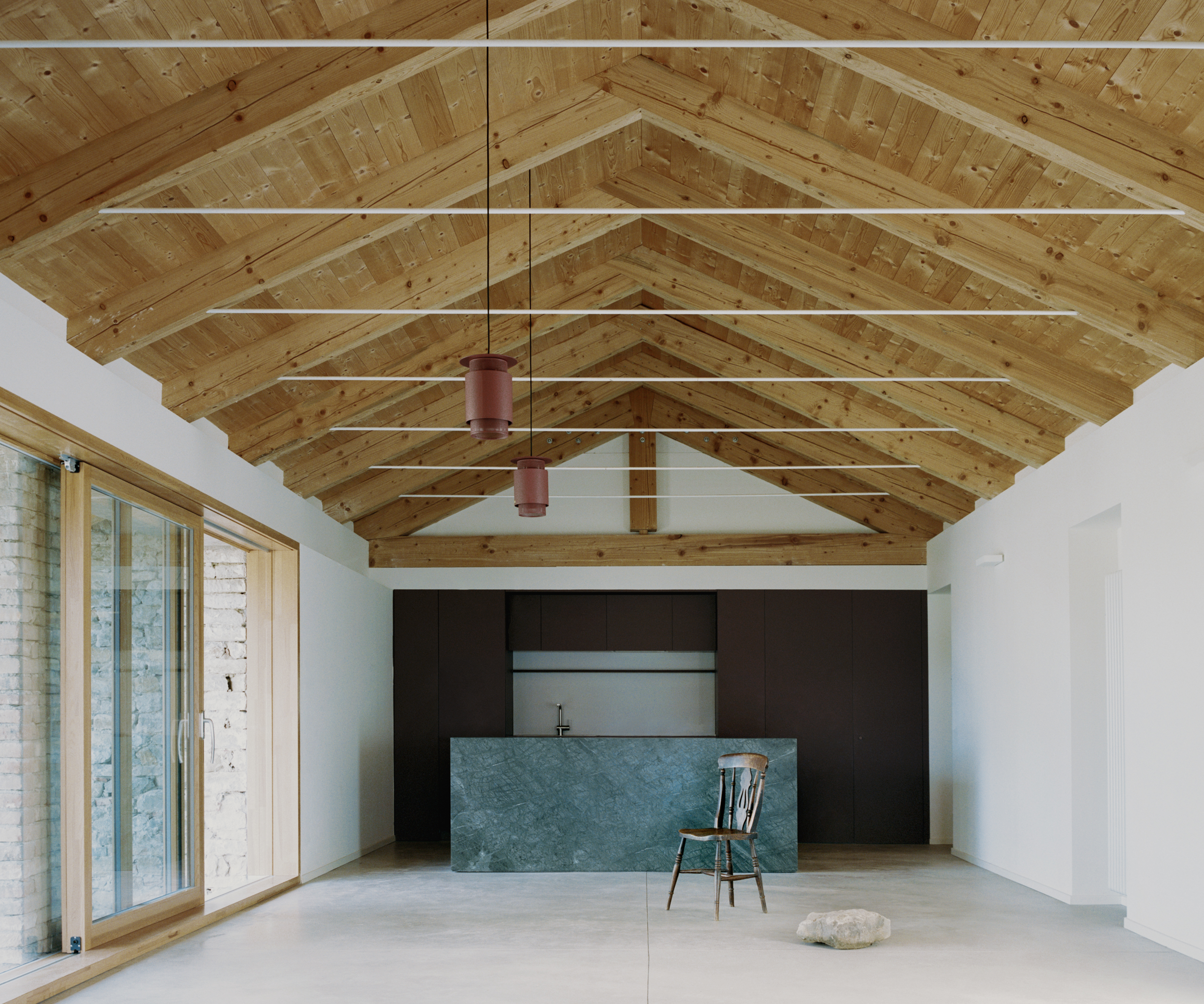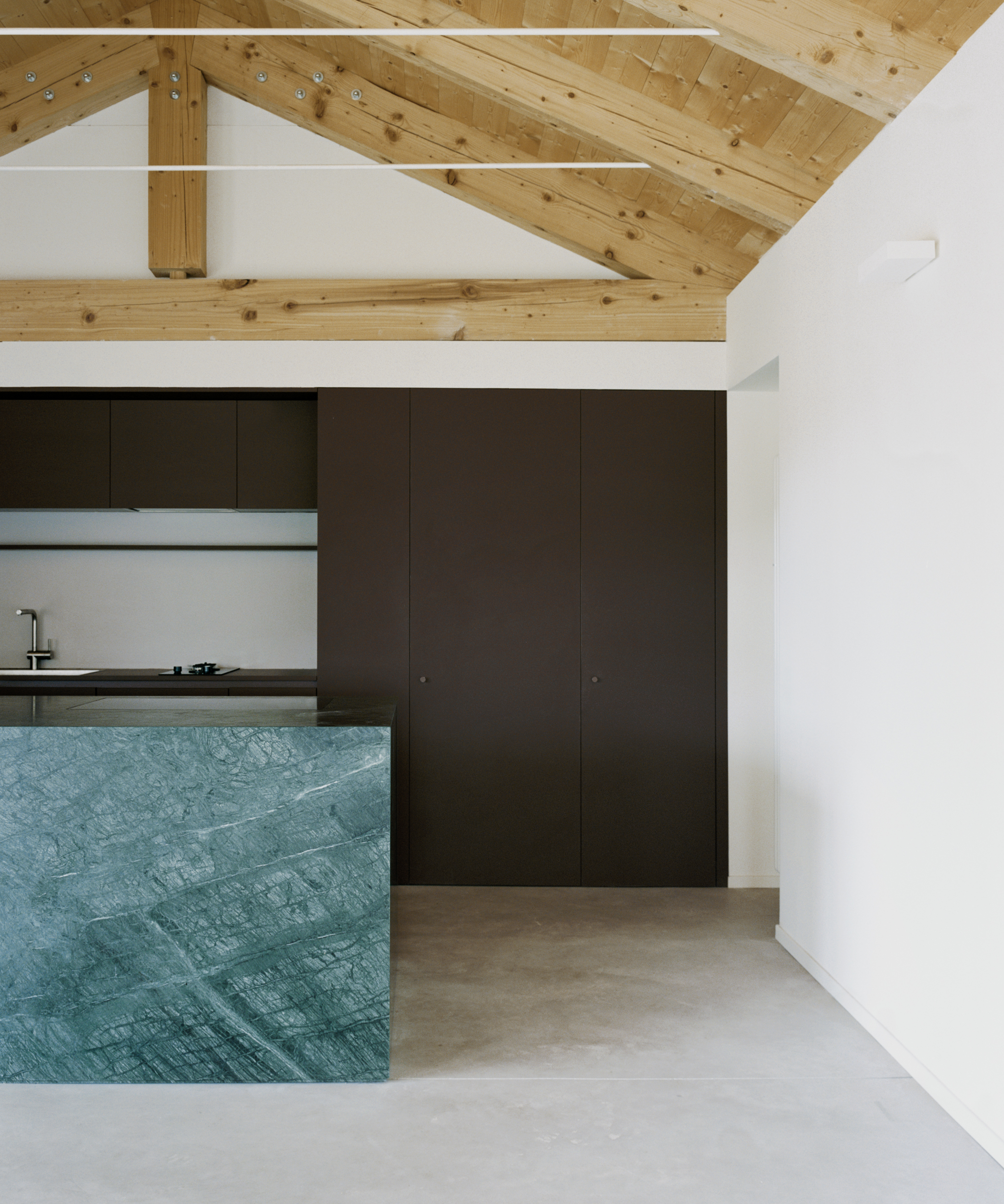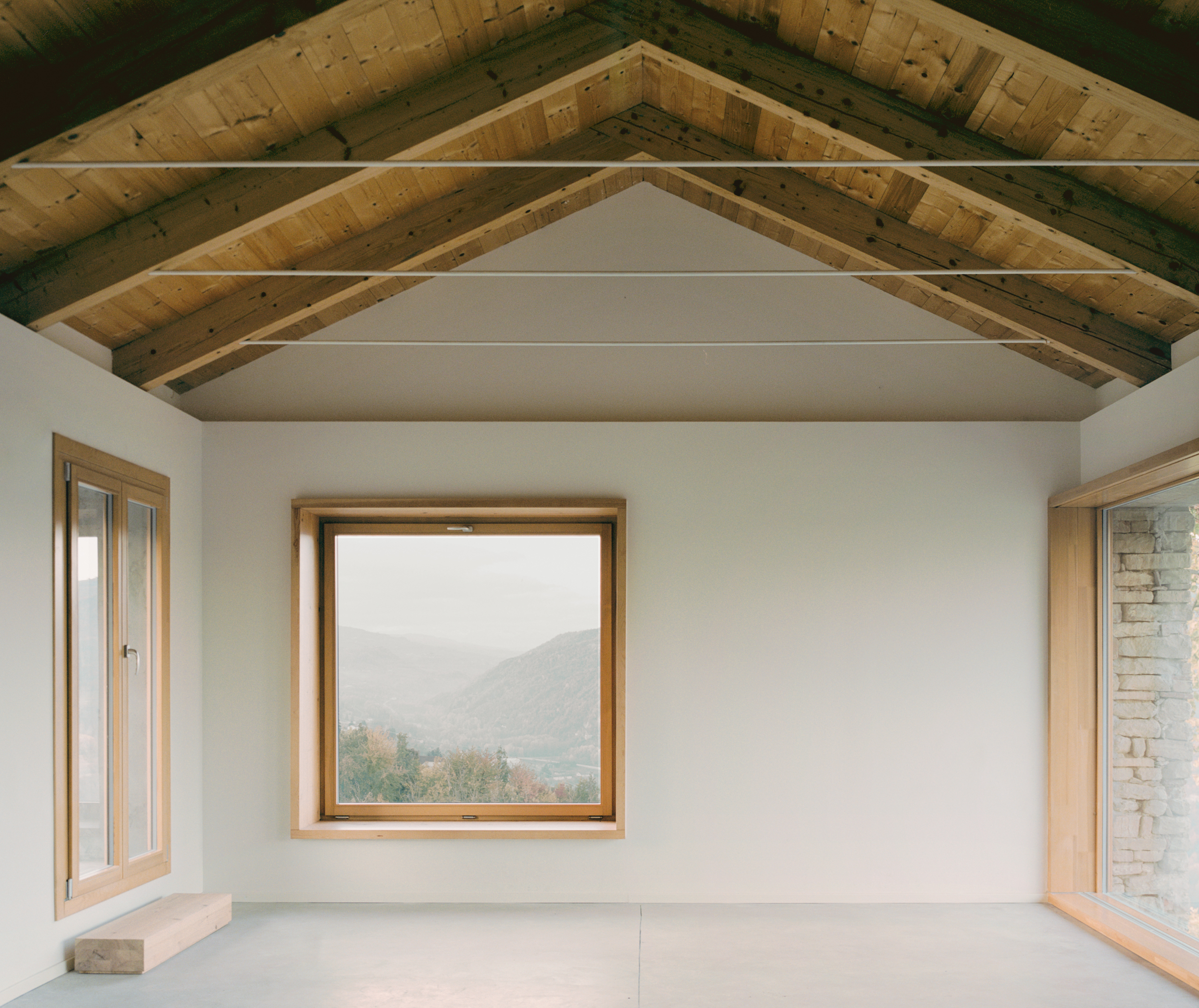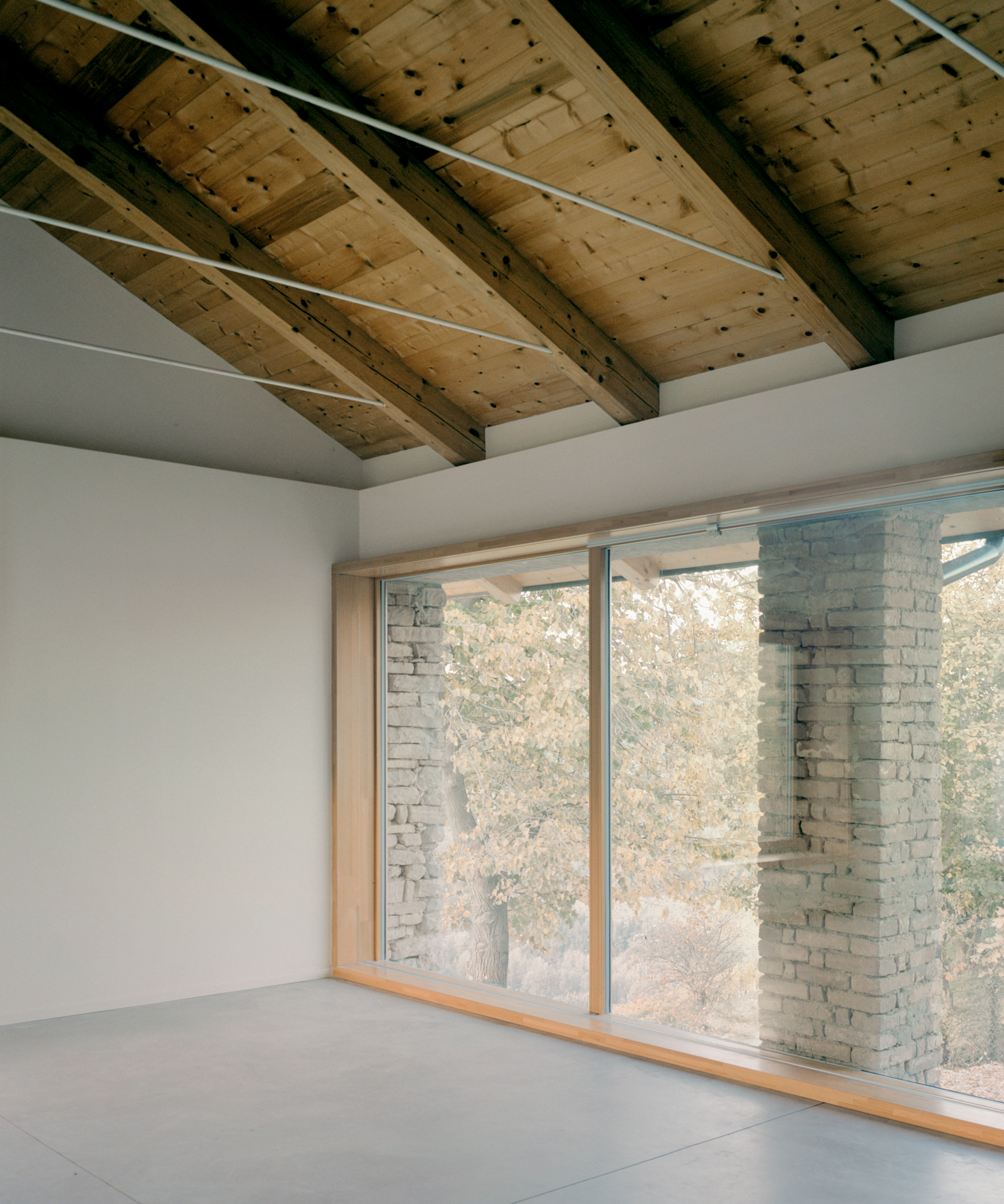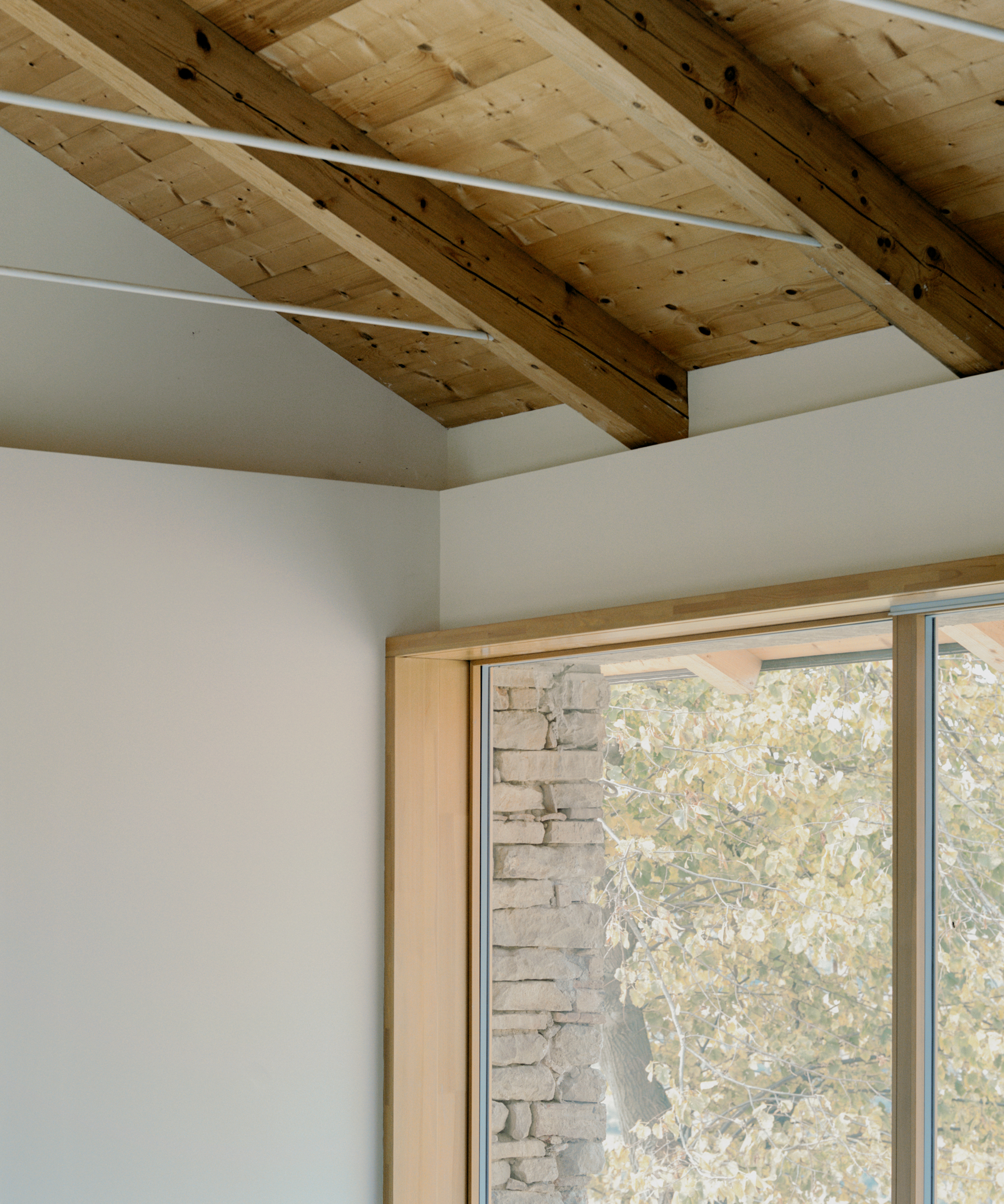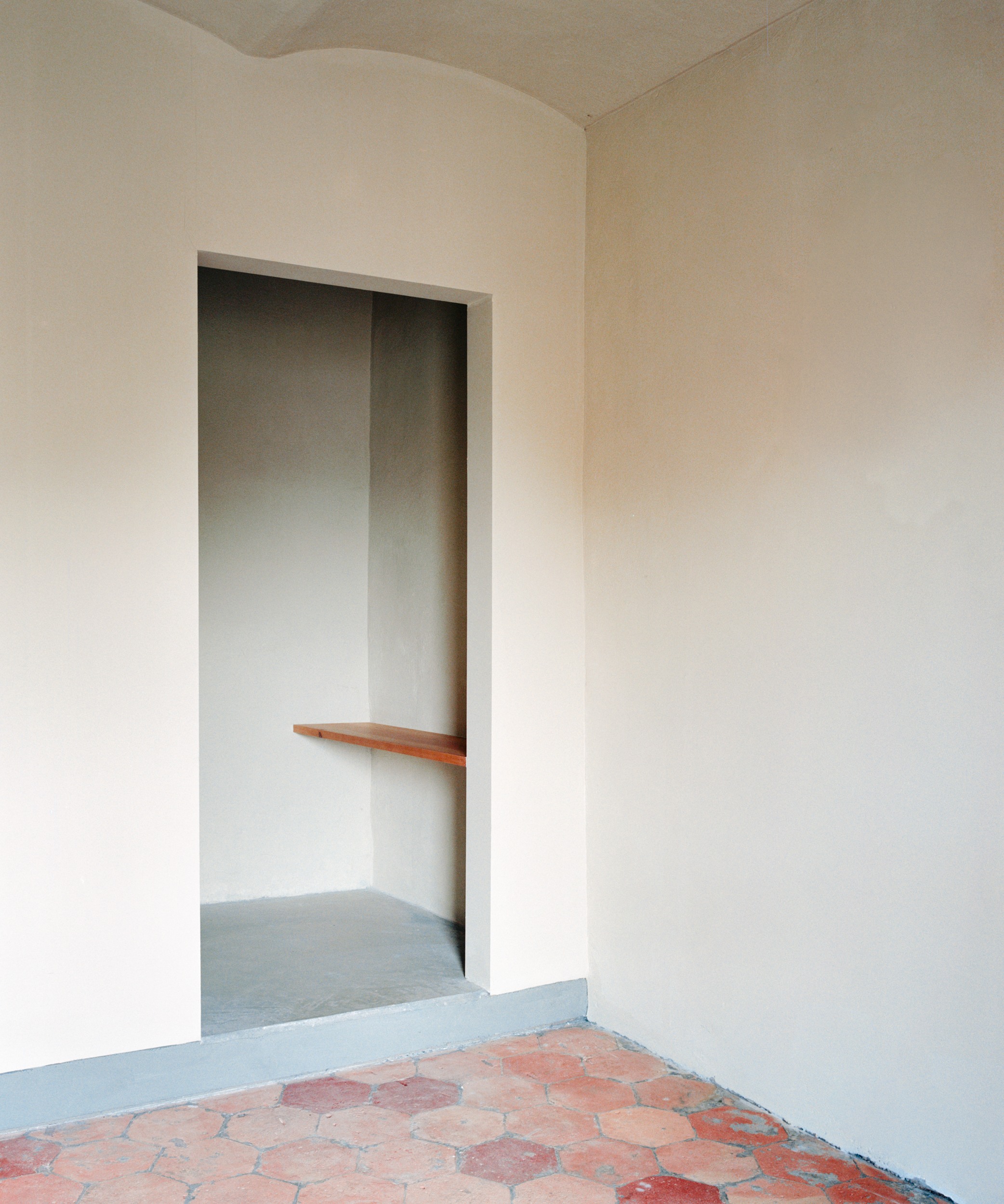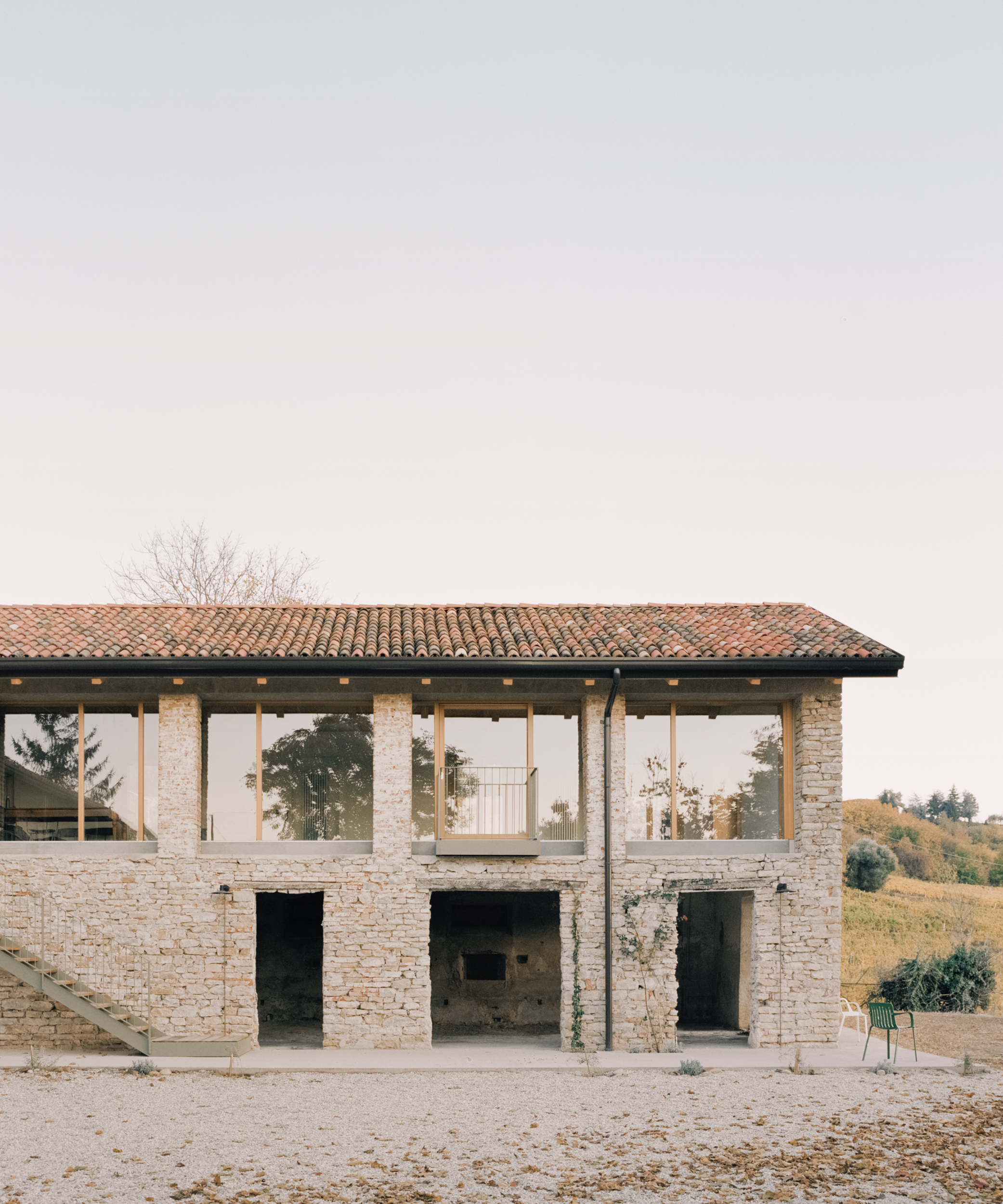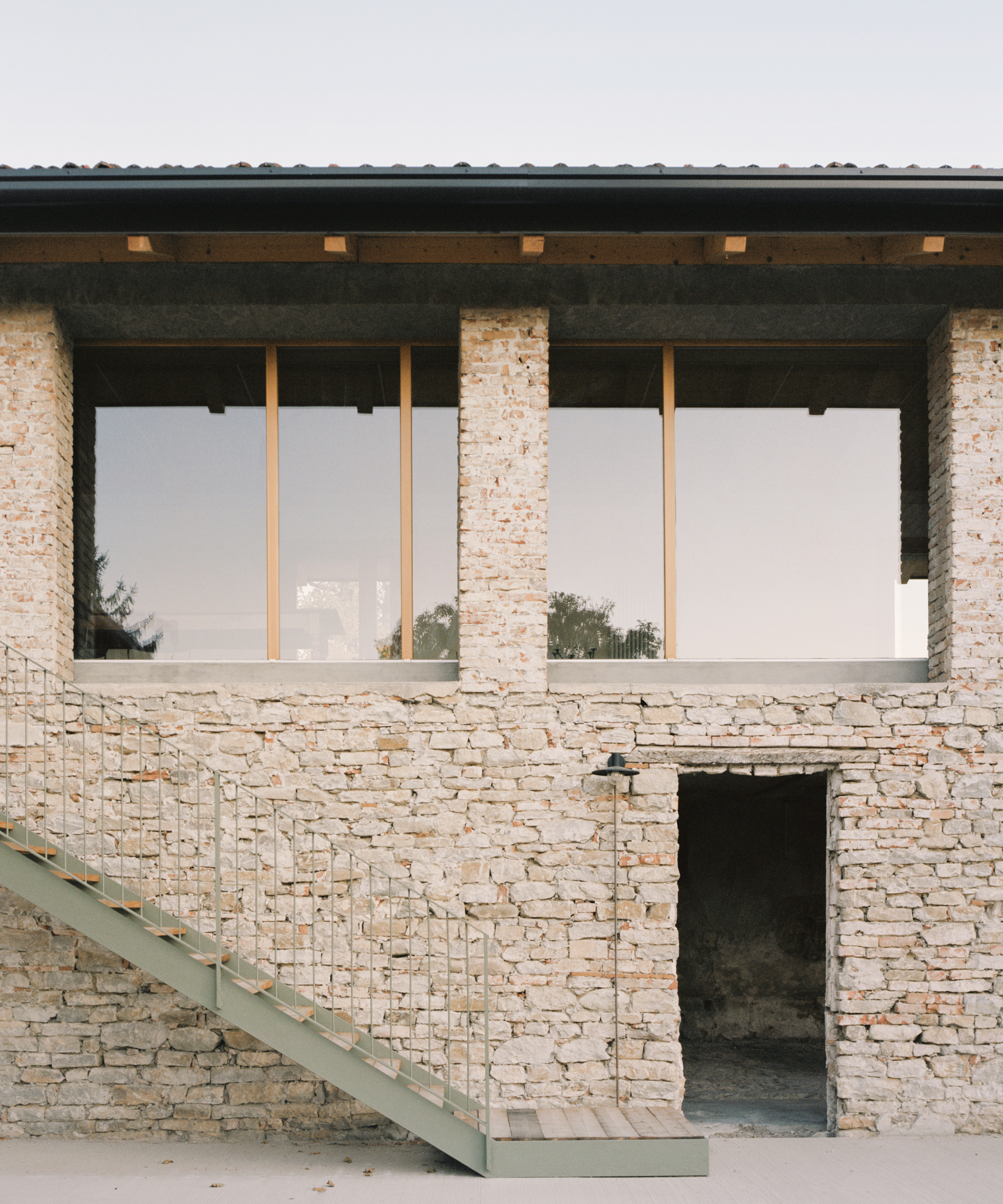Cascina Otto is a minimal residence located in Cossano Belbo, Italy, designed by studio wok. The farmhouse is located on the road that leads to the top of the hill of S. Bovo, surrounded by vineyards in a rural and suggestive landscape. The clients, a young couple from Berlin, wished to convert the anonymous existing building into a convivial place to host friends, a place that could also be transformed into an artistic residence or a vacation rental. The building presents two levels with an “L” structure overlooking a courtyard and it’s composed of an older part (north-east / south-west), already divided into pass-through rooms and storage spaces, and a large barn with stable on the ground floor.
The first project operation was to clarify the planimetric system. The first project operation was to clarify the planimetric system. The barn was kept as an open space and became the heart of the house, hosting the kitchen, the dining and the living area. The typological identity has been preserved thanks to a 15-meters long window, which defines the transition between the inhabited space and the outside landscape and leaves the old brick pillars exposed. A new balcony, connected to the courtyard via an external staircase, reorganizes the access to the rooms and gives uniformity to the front of the building, also recalling a typical element of the rural architecture of the area.
The material choices follow a language that is both linked to the territory and contemporary at the same time. The plaster, originally present on the facades, has been removed to bring to light the “langa stone” masonry with punctual brick inserts. The other elements and details typical of traditional architecture have also been preserved and enhanced. The dialogue between the new grafts and the pre-existing elements occurs naturally, creating an almost timeless stratification. The internal floor of the living area, the external walkways and sidewalks, as well as the new top curb that becomes the tympanum, are made of exposed concrete with its texture and color echoing those of the Langa stone.
Photography by Simone Bossi
